by Sr. Sheila Campbell, MMM Ireland 26.07.2024
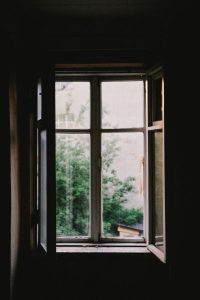 During the Covid-19 pandemic we all had a heightened awareness of the need for fresh air and ventilation. In our convent in Drogheda, it was no different. All our windows and, where possible, doors were kept open. I remember one day I sat staring at the open door of our chapel when I went in to pray in the early morning.
During the Covid-19 pandemic we all had a heightened awareness of the need for fresh air and ventilation. In our convent in Drogheda, it was no different. All our windows and, where possible, doors were kept open. I remember one day I sat staring at the open door of our chapel when I went in to pray in the early morning.
I love the symbol of the open door. It just offers up so much possibility. It is exciting. What is on the other side? I remember entering MMM so many years ago. The open door was a welcoming one. Come and see. Come and join our life. But the open door also has a touch of reality about it. It was kept open so that those who decided otherwise could also leave.
The open door is really just an invitation, a liminal space between two worlds. Within MMM I had the opportunity to learn more about myself, to grow in maturity and self-confidence. Yes, I was educated and given the opportunity to travel and experience other cultures. But I may have had that education and overseas experience outside of MMM. The real difference is the inner work. Here I am, more than fifty years later, still trying to learn more about the inner world and learning connections and deepening relationships – with God and everyone around me.
One of the good things that has happened since all the talk of climate change is a growing awareness of how everything and everybody is inter-connected. We may have had that in theory or in theology before now, but suddenly it is real. When China burns coal, the air we breathe is affected. Our plastic waste ends up in the oceans and destroys the ecosystem we need for food and basic survival. The open door reminds us that the outside affects the inside and the inside of us has to come forward and protect the outside.
So today I prayed that my “door” can stay open and receptive, and I invite you to do the same.
By Sr. Siobhan O’Keefe SHJM Ireland 24.07.2024
 The Gospel of Jesus has much to teach us about workplace justice and the relationship that should exist between employer and employee. Sadly, today many people work long hours in poor working conditions for low wages. They fear the loss of their job if they raise concerns or challenge unjust employers for their just rights. Chief Executive Officers boast of their success, forgetting the plight of those whom they have exploited as ‘they tie up heavy burdens, hard to bear, and lay them on the shoulders of others; but they themselves are unwilling to lift a finger to move them.’
The Gospel of Jesus has much to teach us about workplace justice and the relationship that should exist between employer and employee. Sadly, today many people work long hours in poor working conditions for low wages. They fear the loss of their job if they raise concerns or challenge unjust employers for their just rights. Chief Executive Officers boast of their success, forgetting the plight of those whom they have exploited as ‘they tie up heavy burdens, hard to bear, and lay them on the shoulders of others; but they themselves are unwilling to lift a finger to move them.’
The cry of the poor is not heard as the gap between the rich and the poor continues to widen as ‘profit over people’ is the maxim professed by many multinational organisations. Status and success are the goal as the feelings of people are ignored; hearts and homes are broken as people try to survive in unjust societies; many become economic migrants to survive, often risking their lives to reach a new land that promises safety and opportunity. So often, the land of opportunity may not be much better than the homeland and people feel alienated and alone in their host country.
Nearer to home, I am challenged by the Gospel to reflect on ways in which I may be a partaker in any form of injustice. I am asked to acknowledge ways in which my dealings with others may not be fair and where I may not act with integrity. I ask myself, ‘Do I support Fair Trade shopping where the rights of workers in developing countries are upheld and honoured or do I choose a cheaper option, ignoring the rights of employees to fair wages and good working conditions? As an employer am I just and fair to all my employees offering them family friendly working policies and opportunities to develop themselves as members of the body of Christ? Do I respect my colleagues and community asking God for the grace to walk in the ways of the Lord each day of my life or does the veil of hypocrisy fall over my heart?
I am called to honour the Fatherhood of God in my life; to live the Gospel with authenticity by learning from him who was ‘gentle and humble in heart´ (Matthew 11:29) I am called to help the poor and all in need, to, ’Act justly, love tenderly, walk humbly with your God.’ (Micah 6:8)
by Sr. Brigid McDonagh MMM (1935 – 2014) Ireland/Brazil 22.07.2024
First published by MMM in 2000
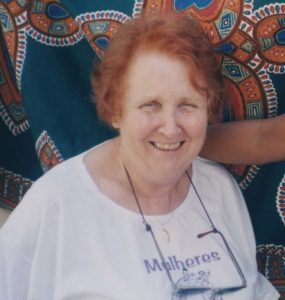 My work is with the women of Brasilândia, on the periphery of São Paulo, Brazil. We have a regional team of 10 women leading the work. There are also local groups. I work at both levels. When, at Regional Level, we started celebrating International Women’s Day in March each year, groups of 300 or even 400 women participated. The women then started to ask for some follow up to that day during the year. They choose themes that were relevant to their daily lives, relating to the struggles in the family, at work and in the Church.
My work is with the women of Brasilândia, on the periphery of São Paulo, Brazil. We have a regional team of 10 women leading the work. There are also local groups. I work at both levels. When, at Regional Level, we started celebrating International Women’s Day in March each year, groups of 300 or even 400 women participated. The women then started to ask for some follow up to that day during the year. They choose themes that were relevant to their daily lives, relating to the struggles in the family, at work and in the Church.
We began to study the women in the Bible, and for two years groups met every week, taking different Biblical stories, reflecting and discussing the relevance of these stories to the life they were living today. Lessons were drawn. The message was applied. With all the many sufferings that touched their lives, it was surprising that one of the biggest dreams of most of the women was to be literate – to be able to read and to write. In most homes the boys were sent to school while the girls stayed at home. The attitude that “they didn’t need to study as they would get married” left them severely handicapped when it came to coping with modern life in an enormous city.
Zildinha, is a good example of the determination that these women bring to their journey. She started with a literacy programme. Then she went on to study a course called Suplitivo – that is a quick secondary school. Then she began to study for her Vestibular which is equivalent to matriculation to a Third Level course. The same perseverance was evident when Zildinha was finally admitted to university to study Sociology. She has now finished her first year at the age of 68!
Zildinha is a symbol of liberation for others and the women in the group know that. As a result, they all contribute to paying her university fees, each making a small monthly contribution.
In 1996 a community radio station was started in our area and the group were asked to contribute an hour a week, so we divided into teams of three, each team taking a week in turn. We divided the hour’s programme into four sections, first a Scripture reading presenting the women of the Bible, both the Old and New Testaments. The second part was a discussion on how to apply the reading to life today. The third part of the programme was devoted to health issues, problems women have to cope with in their own lives and in the lives of their families. In the last section we would give news and updates on events in the communities. In between each of these sections there would be music, songs, greetings and dedications.
We ran this programme for two and a half years without ever repeating a Bible reading, so it shows how many women there are in the Bible! The radio station was closed in July 1999 but we will be ready to resume this work if we get another opportunity another time.
One day I asked the women how the group had helped them. The answers were very touching. “It helped me to value myself as a woman,” “It helped me to face life, to speak out and look for my rights as a human being.” “My family are managing better because I am managing better.” “We are more aware now not to blame other women for problems.” “We have more solidarity with one another.” “We discovered a feminine spirituality through presenting our weekly radio program, on women in the Bible, and relating the stories of these women to today’s living.”
by Nadia Ramoutar MMM Communications Coordinator Ireland 20.07.2024
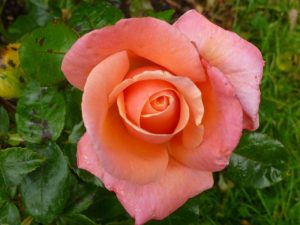 The Irish poet and writer, John O’Donohue once wrote “May you experience each day as a sacred gift woven around the heart of wonder.” One of the aspects of working with the MMMs that I most admire is the Sisters’ sense of wonder in the unknown. There is a very real commitment to looking at a situation and saying “Well, let’s just see what we can do here.” It is fascinating how no two MMM Missions are exactly alike because no two locations of the mission are identical and therefore no two communities have identical needs. The spirit of each mission is unique to the people there and what their greatest challenges would be.
The Irish poet and writer, John O’Donohue once wrote “May you experience each day as a sacred gift woven around the heart of wonder.” One of the aspects of working with the MMMs that I most admire is the Sisters’ sense of wonder in the unknown. There is a very real commitment to looking at a situation and saying “Well, let’s just see what we can do here.” It is fascinating how no two MMM Missions are exactly alike because no two locations of the mission are identical and therefore no two communities have identical needs. The spirit of each mission is unique to the people there and what their greatest challenges would be.
When I began with MMM working in Communications I was overwhelmed at how much the MMM Sisters are doing and how much diversity there was in each country. I am now grateful that there is so much for me to learn in my role in communications. It is a never ending learning adventure. In comparison, one of the horrible things that happens in commerce sometimes is this idea that there is no room for uniqueness or differences. One product or service is the only choice. It’s not true but taking the time to learn the real needs of people takes time and it takes effort. Many people struggle to listen because they think they already know the answer. Many people are too quick to accept what is not acceptable.
Mental noise is the enemy of listening which is the key to good communications and healthy relationships. When there is “learning” involved then we can’t really lose because we are creating what is possible often on the back of what we learned the hard way. Complexities like global climate crisis make things even harder for people who are living on the edge of poverty. As our MMM Sisters try to empower people to have agency over their own life, there are massive challenges to often face. Yet, in this adversity, courage and ingenuity grow too.
We are venturing into a new effort to find solutions to even great problems than we have experienced before and the answer is not always clear. What is apparent though is that the greatest tool we have is each other. We, the staff, work alongside the MMM sisters and the MMM Associates globally committed to making the world a better place. Such a collective resources is what makes our impact possible. We are a combined force of love, faith, knowledge, expertise and adventure. There is much laughter and occasionally tears along the way.
As we face even greater challenges than before, we have to be careful not to allow our apathy or ambition to work against us. In our patience and persistence we will find the answers though they might not come easily. I feel it as great privilege to work with the MMM Sisters and be part of their unshakeable faith in what might not be obvious, but is possible. Together we are wonder-full.
by Sr. Sheila Campbell MMM Ireland 18.07.2024
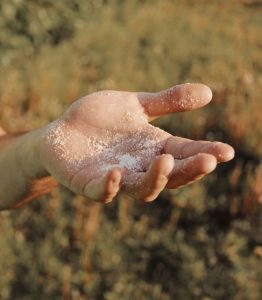 The other day, when I sat down at my desk to work, the first two emails put me in a bad mood. I had that instinctive reaction “This is going to be a “blank” day”. You can add in your own adjective! And, true to form, the rest of the day wasn’t great. A co-worker looked at the emails and they put her in a bad mood too, so now there were two of us! Worse off than before.
The other day, when I sat down at my desk to work, the first two emails put me in a bad mood. I had that instinctive reaction “This is going to be a “blank” day”. You can add in your own adjective! And, true to form, the rest of the day wasn’t great. A co-worker looked at the emails and they put her in a bad mood too, so now there were two of us! Worse off than before.
I tried to distract myself from the emails by trying to do ordinary work, but my mind was elsewhere. It kept spinning around the content of the emails and I found I could not concentrate on any creative work at all.
At the end of the day, I sat in the chapel and thought about the day. Yes, to be in a bad mood every now and again is normal. I would say even Jesus was in a bad mood when he drove the money changers out of the Temple! But I don’t want to let one little incident contaminate my whole day. At first, I thought of the phrase “do not let your heart be troubled, trust in God”, and I sat with that one for a while, but there is the danger of denying the upset and the pain. No, how do I recognize it and yet put it aside?
The next morning for some unknown reason I changed the normal reading at Morning Prayer and used a phrase from Colossians and then my eyes drifted onwards until I came across the following gem:
“Conduct yourselves wisely towards outsiders, making the most of the time. Let your speech always be gracious, seasoned with salt, so that you will know how to answer everyone.” Col 4, 5-6
Yes, I thought, seasoned with salt! At times we need to be “salty” if the situation requires it. I just need to keep in mind the graciousness bit! Thank God, having dumped all this problem on God in prayer I feel better now!
 Recently our Sisters had a heritage tour here in Ireland. They visited places associated with Mother Mary’s life and the early foundation years of MMM. One of those places was St. Joseph’s parish church in Glasthule, South Dublin ,where Marie Martin was baptised. I too was there a week ago at the funeral of an elderly in-law. Can I tell you about my own very prayerful visit?
Recently our Sisters had a heritage tour here in Ireland. They visited places associated with Mother Mary’s life and the early foundation years of MMM. One of those places was St. Joseph’s parish church in Glasthule, South Dublin ,where Marie Martin was baptised. I too was there a week ago at the funeral of an elderly in-law. Can I tell you about my own very prayerful visit?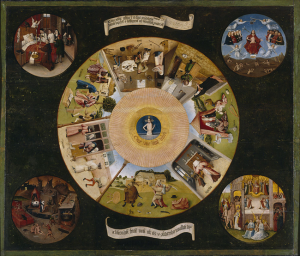 I have had a wish to visit Madrid, capital of Spain, for some years now and in May of this year I succeeded. I wanted to visit the art museums, especially Museo del Prado, Spain’s main art museum, and Museo Reina Sofia. I am not an art expert, but I am fascinated in the human capacity of imagination and creativity. I may not understand some art, but I can appreciate the effort it took to create. I’m sure a larger effort than writing blogs!
I have had a wish to visit Madrid, capital of Spain, for some years now and in May of this year I succeeded. I wanted to visit the art museums, especially Museo del Prado, Spain’s main art museum, and Museo Reina Sofia. I am not an art expert, but I am fascinated in the human capacity of imagination and creativity. I may not understand some art, but I can appreciate the effort it took to create. I’m sure a larger effort than writing blogs!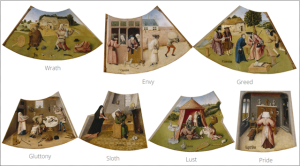 Our human failings have not changed much in 500 years.
Our human failings have not changed much in 500 years.by Sr. Jo Anne Kelly MMM Ireland 12.07.2024
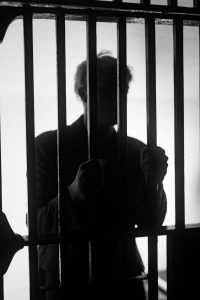 For some years I held the position of Vocation Directress. It was a very special time in my life as I met numerous beautiful, enthusiastic young women who felt God was calling them to religious life. First of all they were all trying to discern which Congregation they would join. The first indication I would receive was a letter in the post requesting information about Medical Missionaries of Mary. It was before the time of mobile phones and computers. Many areas did not yet enjoy a reliable supply of electricity but the postal service was good. Some would write quite a lot of information about themselves, others little or nothing. I answered every letter, and sent basic information and encouraged them to keep in touch. Some continued the correspondence and then I would meet them or invite them to “Come and See” and we would go from there. The majority of those writing had found our address in “The Ambassador” a publication produced by a then new Missionary Society which included, among many other things, a list of addresses of all the Religious Orders and Congregations in the country.
For some years I held the position of Vocation Directress. It was a very special time in my life as I met numerous beautiful, enthusiastic young women who felt God was calling them to religious life. First of all they were all trying to discern which Congregation they would join. The first indication I would receive was a letter in the post requesting information about Medical Missionaries of Mary. It was before the time of mobile phones and computers. Many areas did not yet enjoy a reliable supply of electricity but the postal service was good. Some would write quite a lot of information about themselves, others little or nothing. I answered every letter, and sent basic information and encouraged them to keep in touch. Some continued the correspondence and then I would meet them or invite them to “Come and See” and we would go from there. The majority of those writing had found our address in “The Ambassador” a publication produced by a then new Missionary Society which included, among many other things, a list of addresses of all the Religious Orders and Congregations in the country.
One day I got a letter with a difference –a brown envelope with a prison stamp on the back. It was from a man, asking for information about MMM. It was a nice letter but I was puzzled. I wondered if this man was on the prison staff and writing on behalf of his daughter or young sister. But in that case I doubted if he would put on the prison stamp. However, I didn’t really know what to think. I answered the letter, gave him the basic information and told him if he had some young woman who was interested in joining MMM I would like to hear from the girl herself.
After some time I got a reply, again a brown envelope with the prison stamp on the back. He explained he was a prisoner, accused of a serious crime, was convicted and was now on “death row” waiting for execution. Because of his misdeeds his family had disowned him so he had no visitors and had very little communication with anybody and nothing to read. He was lonely and feeling very guilty. A priest came in sometimes to say Mass but he did not go there. However the priest left a copy of “The Ambassador” and there he found the addresses of all the religious orders. Hungry for some communication he wrote to many of these addresses hoping someone would reply. To date I was the only one who sent a reply and he was so grateful and hoped I would continue. I wrote back as nice a letter as I could and encouraged him to talk with the priest if possible.
I had one more letter from him, in which he mentioned God for the first time and he had talked to the priest and hoped to continue doing so. I answered that letter too, but there were no more from him. I wonder if his time had come!
I prayed much for that man and hoped that he had found some awareness of God’s presence and a sense of forgiveness and peace.
I looked up the meanings of ambassador and one definition is “an official messenger of good will, good news”. Ambassador publications were known in parishes all over the country and were very popular. I hoped that particular “Ambassador” was a message of good news for that man.
I am reminded of St. Paul’s letter to the Corinthians which says “we are ambassadors for Christ, since God is making His appeal through us, to be reconciled to God.”
A reflection in my Missal on this Sunday’s reading says “Let us be sensitive to all kinds of people and situations through which God may be showing us his will.”
by Sr. Sheila Devane MMM Ireland 10.07.2024
 I find myself reading death notices quite often. Sadly, these days I now know more of the people written about than I’d choose to admit! Ageing brings many things; old age takes from us too. In Ireland, the main way we learn about someone’s death is through an online service called “RIP.ie” and I check for the recent deaths every now and then. So be it.
I find myself reading death notices quite often. Sadly, these days I now know more of the people written about than I’d choose to admit! Ageing brings many things; old age takes from us too. In Ireland, the main way we learn about someone’s death is through an online service called “RIP.ie” and I check for the recent deaths every now and then. So be it.
Yesterday I spent time with a friend; we chatted about lots of things: tennis, our families, and days gone by. I heard this story from her about the way a death was announced to her grandmother.
Over a hundred years ago in Ireland we certainly had no form of external communication with anyone except by letter. It was a time of mass emigration to USA, England, Scotland Australia, and Canada. Also, many missionaries were leaving their families to go all over the world never to return home again.
May Quinn, Sally’s grandmother, came from a large family & had two brothers who joined the Franciscans. Both left Ireland, one for Australia, the other for South Africa; neither ever returned to Co. Mayo. They wrote letters home telling of their missionary work; these took months to arrive and those written in reply on a special, green, light airmail page also took ages to reach their destination. So, it was all about getting the letter. This was a time even long before the telegram. People would frequently ask each other “did you get a letter?” In rural Ireland post was carefully watched by the postman or postmistress who knew who was receiving letters and who wasn’t. Confidentiality was different then too!
One morning May came to breakfast announcing to her youngest grandchild that Andy had died. The child knew he was her father’s uncle who she had never met, and that he was a priest in Australia, a very big country where there were kangaroos and other strange animals. The grandchild also knew Australia was hot, as the two photos they had showed him wearing sunglasses and a large, brimmed sunhat. She passed no remarks but on going outside met her father to whom she told “Uncle Andy has died.” He was shocked, this was his oldest uncle and one he had met before he left many years ago. What had happened? Did they get a letter?
May told her story; she had received no letter but Andy passed through her room the night before. The family were alarmed more at the announcement of the death than of the death itself. Was mother losing her mind? Did she dream? True? What?
About six months letter a letter did arrive, but not from Andy. It came from someone calling himself the Minister General in Rome, announcing the unexpected death in Perth, Australia, on the very day May had “met” Andy herself.
Death comes in many ways, death announcements too.
by Sr. Sheila Campbell MMM Ireland 08.07.2024
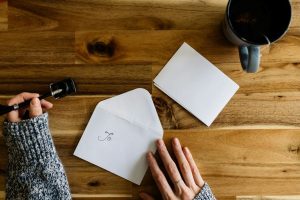 The other day I came across a letter I had received about twenty years ago. Why did I keep it? Well, this is the story. The letter was from a lady called Margarida, and she was telling me that I had cared for her many years earlier while she was pregnant with twins. During her pregnancy she had suffered a heart attack. She had survived, but the pregnancy was at risk. I used to visit her regularly, checking her blood pressure, and generally supporting her during the pregnancy. She was writing to thank me for my care at that time and to let me know that her twin daughters were now both at university.
The other day I came across a letter I had received about twenty years ago. Why did I keep it? Well, this is the story. The letter was from a lady called Margarida, and she was telling me that I had cared for her many years earlier while she was pregnant with twins. During her pregnancy she had suffered a heart attack. She had survived, but the pregnancy was at risk. I used to visit her regularly, checking her blood pressure, and generally supporting her during the pregnancy. She was writing to thank me for my care at that time and to let me know that her twin daughters were now both at university.
I had absolutely no memory of who this lady was! Yes, I remembered working in that area of Sao Paulo, and it would have been typical of the kind of house visits I would have done. How could I not remember such a dramatic pregnancy? I began chastising myself for my bad memory and felt very guilty. Then I stopped and decided to keep the letter.
Now, why did I keep the letter? I think I kept the letter to remind myself that we do not always remember the good things we have done. Many of us remember the faults, the failures, the times when we didn’t come up to the mark. It is good to have a reminder that sometimes we did get it right, that our work for others has had an impact on the real lives of ordinary people.
We can all make a difference in other people’s lives by small acts of kindness. It doesn’t need to be grand gestures, sometimes just a smile, a comforting pat on the arm, a gesture of good will. The fact that we forget we have done well sometimes can also be a good thing. It is a reminder that to be kind and thoughtful is normal, natural, part of what God is calling us to be.
